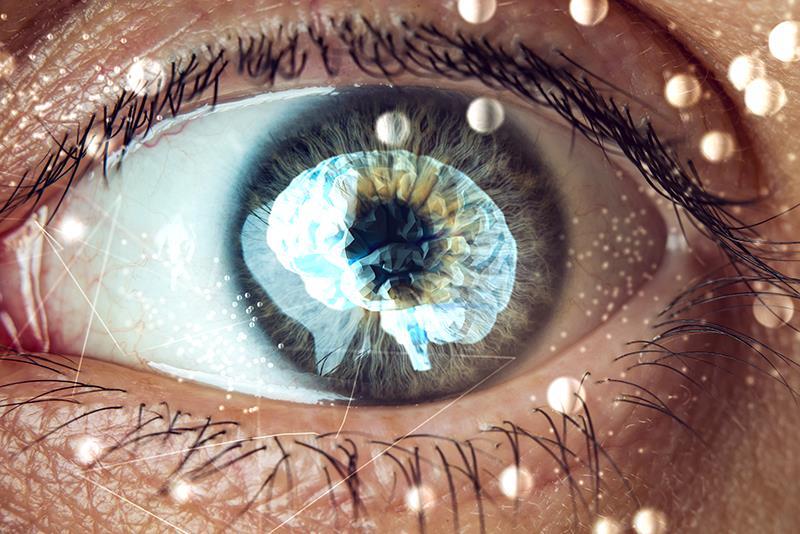Retinal ageing marker may predict cognitive decline, dementia





A study from Singapore underscores the potential of a retinal ageing biomarker derived from retinal photography as a prognostic biomarker for cognitive decline and incident dementia.
“[W]e demonstrated significant associations of RetiPhenoAge – an established, noninvasive, deep learning-derived retinal ageing biomarker – with future cognitive decline and progression to dementia in a longitudinal Southeast Asian memory clinic cohort,” said the researchers.
Participants with higher baseline RetiPhenoAge z-scores were more likely to develop cognitive decline in the age-adjusted model (subdistribution hazard ratio [SHR], 1.42; p<0.001) and after further adjustments for age, education, gender, hypertension, hyperlipidaemia, diabetes, and baseline cognition (SHR, 1.34; p=0.004).
There were significant separations in the Kaplan–Meier (KM) curves for cognitive decline stratified by RetiPhenoAge quartiles (plog-rank< 0.001). [Alzheimer’s Dement 2025;21:e14601]
Of those with CIND* (n=213), 46 (21.6 percent) converted to dementia. Using competing risk regression, higher RetiPhenoAge z-scores were associated with significantly increased hazard of progression from CIND to dementia in both age-adjusted (SHR, 1.44; p=0.034) and fully adjusted (SHR, 1.43; p=0.036) analyses.
Similar findings were observed after further adjustments for hypertension, hyperlipidaemia, and diabetes (SHR, 1.43; p=0.038). There were also significant separations between RetiPhenoAge quartiles on the KM curves for progression from CIND to dementia (plog-rank=0.001).
Replication analysis
Higher RetiPhenoAge scores were similarly associated with future risk of incident dementia in a younger Caucasian community cohort in both age-adjusted (SHR, 1.31; p=0.001) and fully adjusted (SHR, 1.25; p=0.008) models. The KM curves for incident dementia stratified by RetiPhenoAge quartiles also showed a significant separation of survival curves (plog-rank<0.001).
“Demonstrating reproducibility and validation in both cohorts and ethnicities, RetiPhenoAge may thus be an opportunistic, noninvasive prognostic screening tool for cognitive decline and dementia,” said the researchers.
Secondary analyses
Higher RetiPhenoAge scores were associated with greater cross-sectional burden of CSVD** (WMH*** volume, β, 0.16; p=0.015), cerebral microbleeds (adjusted relative risk, 1.88; p<0.001), and neurodegeneration indices (grey matter volume, β, -0.34; p=0.023).
Of 1,441 plasma proteins studied, 345 were significantly associated with RetiPhenoAge (q-value<0.05). Of these, 294 were positively associated with RetiPhenoAge, while the rest were negatively associated.
“The plasma proteomic analysis additionally identified diverse biological pathways related to ageing, which underpinned older RetiPhenoAge. These biological pathways included processes related to inflammation, insulin-like growth factor signalling, cellular adhesion, and extracellular matrix disruption,” the researchers noted.
A promising modality
RetiPhenoAge is trained on the ground truths of PhenoAGE (a validated ageing marker derived from a composite of phenotypic biomarkers, including glucose, C-reactive protein, albumin, and chronological age), which has been successfully used to improve the prediction of morbidity and mortality. [Aging (Albany NY) 2018;10:573-591; The Lancet Healthy Longev 2024;5:100593]
The investigators used data from the MACC# cohort of individuals recruited from St Luke’s Hospital and National University Hospital Singapore. RetiPhenoAge scores were assessed for 526 patients. Of those with longitudinal follow-up data (n=510; mean age 72.4 years, 56.1 percent women), 30.4 percent (n=155) developed cognitive decline over 3.9 years of follow-up.
Replication analysis within eligible participants from the UK Biobank cohort (n=33,495; mean age 56.8 years, 54.3 percent women) was conducted using a similar approach.
“Our findings reinforce the utility of digital technology as a promising modality, which can be effectively applied to retinal photos for the prognostication of future cognitive outcomes,” the investigators said.
They called for future studies to evaluate the feasibility of RetiPhenoAge as a risk-stratification tool for identifying at-risk individuals, as well as its scalability and integration in community care and specialized clinical settings to enable early targeted interventions.
“Further study is also needed to explore the biological mechanisms linking older RetiPhenoAge to cognitive outcomes. This would yield deeper insights into the ageing processes reflected in the retina and determine its viability as a surrogate endpoint in clinical trials targeting cognitive decline,” they added.